-
 Bitcoin
Bitcoin $116400
-0.36% -
 Ethereum
Ethereum $4033
3.40% -
 XRP
XRP $3.302
-1.26% -
 Tether USDt
Tether USDt $1.000
-0.02% -
 BNB
BNB $796.1
1.67% -
 Solana
Solana $177.8
1.89% -
 USDC
USDC $0.9999
0.00% -
 Dogecoin
Dogecoin $0.2314
4.09% -
 TRON
TRON $0.3381
0.14% -
 Cardano
Cardano $0.7989
1.22% -
 Stellar
Stellar $0.4496
-1.84% -
 Chainlink
Chainlink $20.42
9.42% -
 Hyperliquid
Hyperliquid $41.17
0.88% -
 Sui
Sui $3.914
3.77% -
 Bitcoin Cash
Bitcoin Cash $584.7
1.52% -
 Hedera
Hedera $0.2632
-0.54% -
 Avalanche
Avalanche $24.09
3.40% -
 Ethena USDe
Ethena USDe $1.001
-0.02% -
 Litecoin
Litecoin $123.2
1.33% -
 Toncoin
Toncoin $3.318
-0.04% -
 UNUS SED LEO
UNUS SED LEO $8.984
-0.05% -
 Shiba Inu
Shiba Inu $0.00001323
2.85% -
 Uniswap
Uniswap $10.90
4.41% -
 Polkadot
Polkadot $3.999
3.34% -
 Dai
Dai $1.000
0.01% -
 Cronos
Cronos $0.1630
9.64% -
 Bitget Token
Bitget Token $4.484
0.82% -
 Monero
Monero $272.4
2.44% -
 Pepe
Pepe $0.00001173
6.03% -
 Aave
Aave $290.8
2.88%
Pricing and functional differences between Kraken and Kraken Pro
Kraken suits beginners with its simple interface, while Kraken Pro offers advanced tools and lower fees for high-volume traders. Both share robust security.
Apr 01, 2025 at 10:57 am
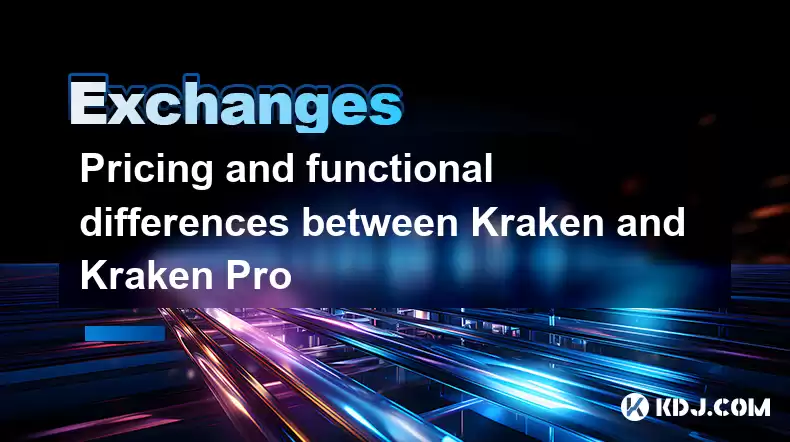
Kraken and Kraken Pro are both cryptocurrency exchanges offered by Kraken. While they share the same underlying infrastructure and security, they cater to different user needs and offer distinct features and pricing structures. Understanding these differences is crucial for choosing the platform that best suits your trading style and experience level.
Understanding Kraken's User Interface and Functionality
Kraken, the standard platform, is designed for a broader audience, including beginners. Its interface is relatively simpler and more intuitive, making it easier to navigate for those new to cryptocurrency trading. It offers a good range of features, including spot trading, margin trading, and staking, but lacks the advanced tools found in Kraken Pro. The fee structure is generally competitive, but might not be as advantageous for high-volume traders.
Diving into Kraken Pro's Advanced Features
Kraken Pro, on the other hand, is geared towards experienced traders and professionals. It boasts a significantly more advanced and customizable interface, offering a wider array of charting tools, technical indicators, and order types. This sophisticated interface allows for complex trading strategies and high-frequency trading, features unavailable on the standard Kraken platform. The advanced order types include things like iceberg orders and post-only orders, giving traders more control over their market impact. The enhanced charting capabilities allow for in-depth market analysis.
Fee Structures: A Detailed Comparison
Both platforms utilize a maker-taker fee system. Maker orders add liquidity to the order book and generally receive a fee discount, while taker orders remove liquidity and incur a higher fee. However, the specific fee rates differ between Kraken and Kraken Pro. Kraken Pro often offers lower fees for high-volume traders, making it a more cost-effective option for those executing numerous trades. The exact fee schedule for both platforms is publicly available on their websites and depends on your 30-day trading volume.
Order Types: Kraken vs. Kraken Pro
The range of order types available significantly differentiates the two platforms. Kraken offers standard market and limit orders, suitable for most casual traders. However, Kraken Pro expands this significantly.
- Market Orders: These execute immediately at the best available price.
- Limit Orders: These execute only when the price reaches a specified level.
- Stop-Loss Orders: These automatically sell your assets when the price drops to a certain point, limiting potential losses.
- Stop-Limit Orders: A combination of stop-loss and limit orders, offering more control over the execution price.
- Trailing Stop Orders: These automatically adjust the stop price as the asset price moves in your favor. These are especially helpful in managing profits.
- Iceberg Orders: These hide the true size of your order, reducing market impact.
- Post-Only Orders: These only add liquidity to the order book; they won't execute if they immediately match an existing order.
Kraken Pro provides access to all these order types and more, empowering advanced trading strategies not possible on the standard Kraken platform. The additional order types in Kraken Pro cater to sophisticated trading techniques, allowing for more precise market manipulation.
Trading Interfaces: Simplicity vs. Sophistication
Kraken's interface prioritizes simplicity and ease of use. It's straightforward, making it ideal for beginners. Kraken Pro, conversely, features a highly customizable and advanced interface. This includes extensive charting tools, multiple order book views, and customizable layouts. This advanced interface allows for in-depth market analysis and execution of complex trading strategies. Users can personalize their workspace to focus on the metrics most relevant to their trading style.
Security Measures: A Shared Foundation
Both Kraken and Kraken Pro share the same robust security infrastructure. This includes two-factor authentication (2FA), cold storage for a significant portion of assets, and advanced security protocols to protect user funds. While the interfaces differ, the underlying security measures are identical, ensuring a high level of protection for all users. The security measures are continuously updated to address evolving threats.
Margin Trading and Leverage
Both platforms support margin trading, allowing users to borrow funds to increase their trading positions. However, the leverage available and the specific terms might differ slightly. Kraken Pro might offer higher leverage options, but this comes with increased risk. Always understand the risks associated with margin trading before utilizing this feature.
Customer Support: Accessibility and Responsiveness
Both platforms offer customer support, but the level of support and response times might vary. Kraken, due to its larger user base, might have longer wait times for responses. Kraken Pro, while catering to a more experienced user base, might offer more specialized support for complex trading issues.
Conclusion (Omitted as per instructions)
Frequently Asked Questions
Q: Which platform is better for beginners?
A: Kraken is better suited for beginners due to its simpler interface and easier navigation.
Q: Which platform offers lower fees?
A: Kraken Pro generally offers lower fees for high-volume traders, while Kraken's fees are more competitive for lower trading volumes.
Q: Does Kraken Pro offer more advanced features?
A: Yes, Kraken Pro offers significantly more advanced features, including a wider range of order types, customizable interfaces, and enhanced charting tools.
Q: Are both platforms equally secure?
A: Yes, both platforms share the same robust security infrastructure, including 2FA and cold storage.
Q: Can I transfer funds between Kraken and Kraken Pro?
A: Yes, you can usually transfer funds between Kraken and Kraken Pro accounts. The exact process may be outlined on their website.
Q: Which platform is better for high-frequency trading?
A: Kraken Pro is significantly better suited for high-frequency trading due to its advanced features and lower fees for high-volume traders.
Q: What is the difference in the user experience between the two platforms?
A: Kraken prioritizes ease of use and simplicity, while Kraken Pro prioritizes customization and advanced functionality, leading to a steeper learning curve.
Q: Are there any limitations on the cryptocurrencies available on each platform?
A: While both platforms offer a wide range of cryptocurrencies, there might be minor differences in the exact list of available assets. Check each platform's website for the most up-to-date information.
Disclaimer:info@kdj.com
The information provided is not trading advice. kdj.com does not assume any responsibility for any investments made based on the information provided in this article. Cryptocurrencies are highly volatile and it is highly recommended that you invest with caution after thorough research!
If you believe that the content used on this website infringes your copyright, please contact us immediately (info@kdj.com) and we will delete it promptly.
- Bitcoin Goes to Harvard: Ivy League Embraces Digital Assets
- 2025-08-09 10:50:12
- Arctic Pablo Coin: The Meme Coin Presale Promising High ROI in Q3 2025
- 2025-08-09 10:50:12
- Pepe Price, Millionaire Potential, and Layer Brett: The Next Big Meme Coin?
- 2025-08-09 10:30:12
- Meme Coins: Multiply Your Investment with the Right Hype in 2025
- 2025-08-09 10:30:12
- Crypto, Million, Investment: Turning $1K into $1M in the Wild World of Digital Assets
- 2025-08-09 10:55:12
- Coinbase, UK Ban, and the Shifting Sands of the Financial System: A New Yorker's Take
- 2025-08-09 11:00:12
Related knowledge
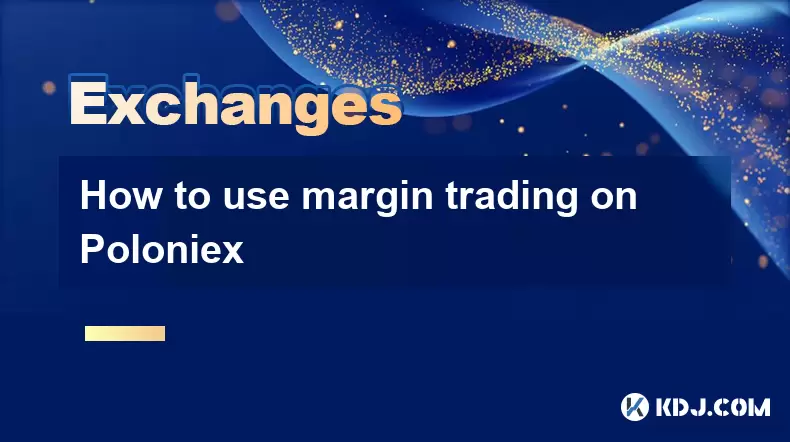
How to use margin trading on Poloniex
Aug 08,2025 at 09:50am
Understanding Margin Trading on Poloniex
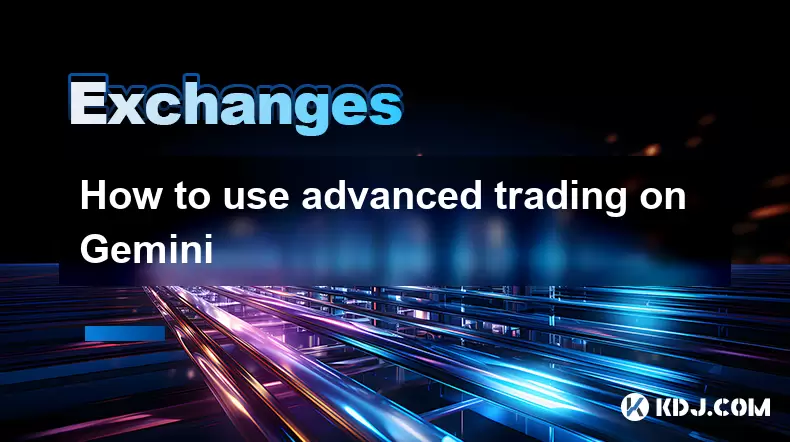
How to use advanced trading on Gemini
Aug 08,2025 at 04:07am
Understanding Advanced Trading on GeminiAdvanced trading on Gemini refers to a suite of tools and order types designed for experienced traders who wan...
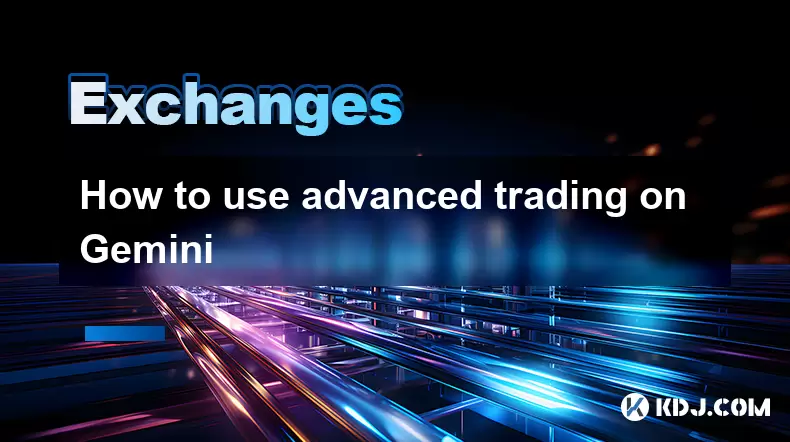
How to use advanced trading on Gemini
Aug 08,2025 at 10:56pm
Understanding Advanced Trading on GeminiAdvanced trading on Gemini refers to the suite of tools and order types available on the Gemini ActiveTrader p...
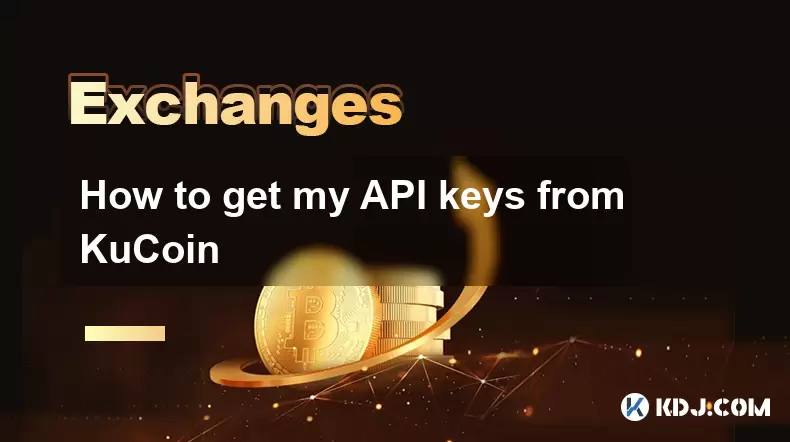
How to get my API keys from KuCoin
Aug 08,2025 at 06:50pm
Understanding API Keys on KuCoinAPI keys are essential tools for users who want to interact with KuCoin's trading platform programmatically. These key...
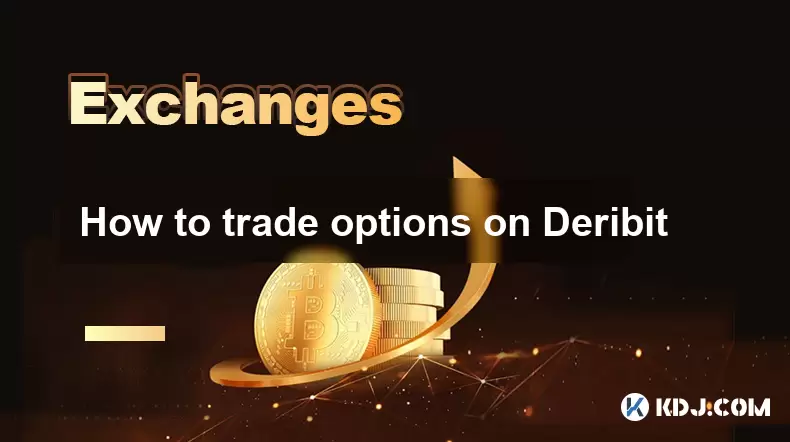
How to trade options on Deribit
Aug 09,2025 at 01:42am
Understanding Deribit and Its Options MarketDeribit is a leading cryptocurrency derivatives exchange that specializes in Bitcoin (BTC) and Ethereum (E...
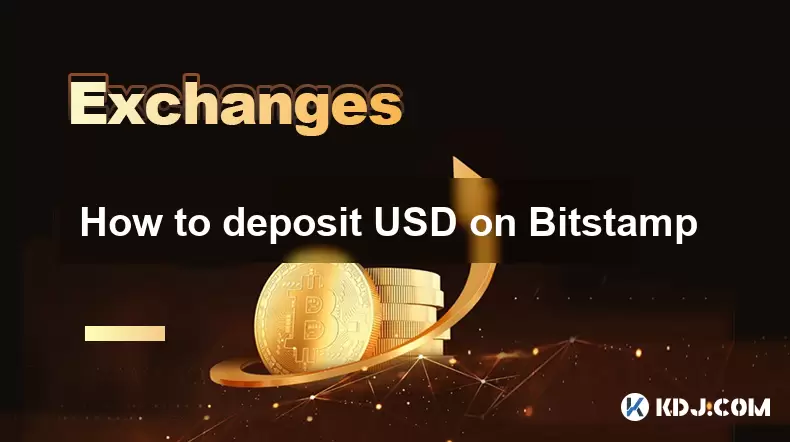
How to deposit USD on Bitstamp
Aug 07,2025 at 05:18pm
Understanding Bitstamp and USD DepositsBitstamp is one of the longest-standing cryptocurrency exchanges in the industry, offering users the ability to...

How to use margin trading on Poloniex
Aug 08,2025 at 09:50am
Understanding Margin Trading on Poloniex

How to use advanced trading on Gemini
Aug 08,2025 at 04:07am
Understanding Advanced Trading on GeminiAdvanced trading on Gemini refers to a suite of tools and order types designed for experienced traders who wan...

How to use advanced trading on Gemini
Aug 08,2025 at 10:56pm
Understanding Advanced Trading on GeminiAdvanced trading on Gemini refers to the suite of tools and order types available on the Gemini ActiveTrader p...

How to get my API keys from KuCoin
Aug 08,2025 at 06:50pm
Understanding API Keys on KuCoinAPI keys are essential tools for users who want to interact with KuCoin's trading platform programmatically. These key...

How to trade options on Deribit
Aug 09,2025 at 01:42am
Understanding Deribit and Its Options MarketDeribit is a leading cryptocurrency derivatives exchange that specializes in Bitcoin (BTC) and Ethereum (E...

How to deposit USD on Bitstamp
Aug 07,2025 at 05:18pm
Understanding Bitstamp and USD DepositsBitstamp is one of the longest-standing cryptocurrency exchanges in the industry, offering users the ability to...
See all articles

























































































